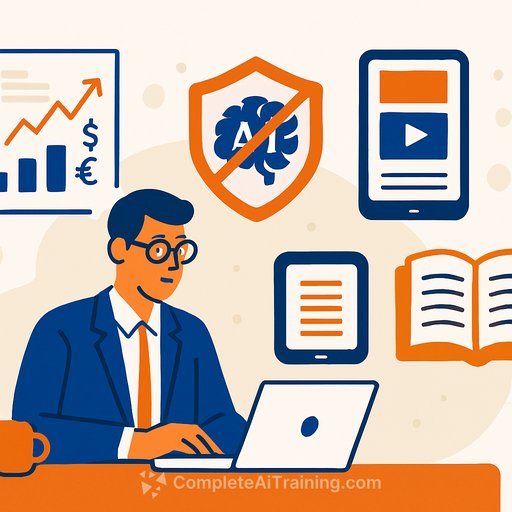The Economist's AI plan: block the bots, build the brand, own the experience
The Economist is preparing for an AI-dominated future by taking a clear stance: protect its journalism, control distribution, and focus on products that readers pay for. President Luke Bradley-Jones put it plainly: "We're building our business for an environment where we don't expect to get any traffic back from those AI platforms."
Instead of licensing its archive widely, the publisher is actively blocking AI bots from scraping content through its CDN partner, Cloudflare. The message is simple-don't depend on referrals from AI front-ends; become the destination.
Assume zero traffic from AI platforms
AI chat interfaces aim to answer users directly. Counting on them for click-throughs is a losing bet. The Economist is planning as if those referrals won't come, and building revenue on the strength of its own products and subscriptions.
Selective visibility with strict access controls
The team is exploring ways to surface top stories inside AI platforms as brand signposts-not as traffic drivers. That means tight control over what crawlers can access and what they can't. Expect a mix of teaser access, rate limits, and bot filtering to protect core value.
If you run a site, this is a smart baseline: use your robots.txt, analytics, and bot tools to decide what gets indexed and what stays behind the curtain. For reference, see Cloudflare's bot management overview and the robots.txt standard.
AI-built products, multi-format by default
The Economist is testing how readers want to consume the same idea: five-minute summaries, 50-minute deep dives, text, video, and audio. AI is a production lever here-turn one reported piece into multiple high-quality formats without diluting the reporting.
For writers and small teams, this is the model: write once, package many times, keep a consistent voice, and charge for the experience that saves time or adds depth.
What this means for writers
- Treat AI platforms like billboards, not homepages. Use them for awareness while keeping your best work on channels you own.
- Package every core idea in two modes: a short version (summary, thread, reel) and a long version (essay, podcast, video essay).
- Control access. Block unwanted bots, allow what supports discovery, and protect premium content.
- Monetize the experience: community, newsletters, premium archives, or member-only deep dives.
Practical next steps
- Set a policy: assume no traffic from AI front-ends; build for direct visits, email, and paid members.
- Audit crawlers and scraping. Lock down what you don't want indexed; monitor unusual bot activity.
- Create a format map for each article: 5-minute summary, long-form version, audio read, and a visual cut.
- Measure retention and completion rates, not just pageviews. Optimize for time saved or insight gained.
- Run controlled syndication: share teasers where your audience hangs out; keep full value on your site.
Level up your AI content stack
If you're building a solo or team workflow for multi-format content, explore practical tools and training:
The takeaway: protect your work, direct your distribution, and use AI to deliver formats your readers actually finish. That's how you grow when referral traffic gets squeezed.
Your membership also unlocks:






